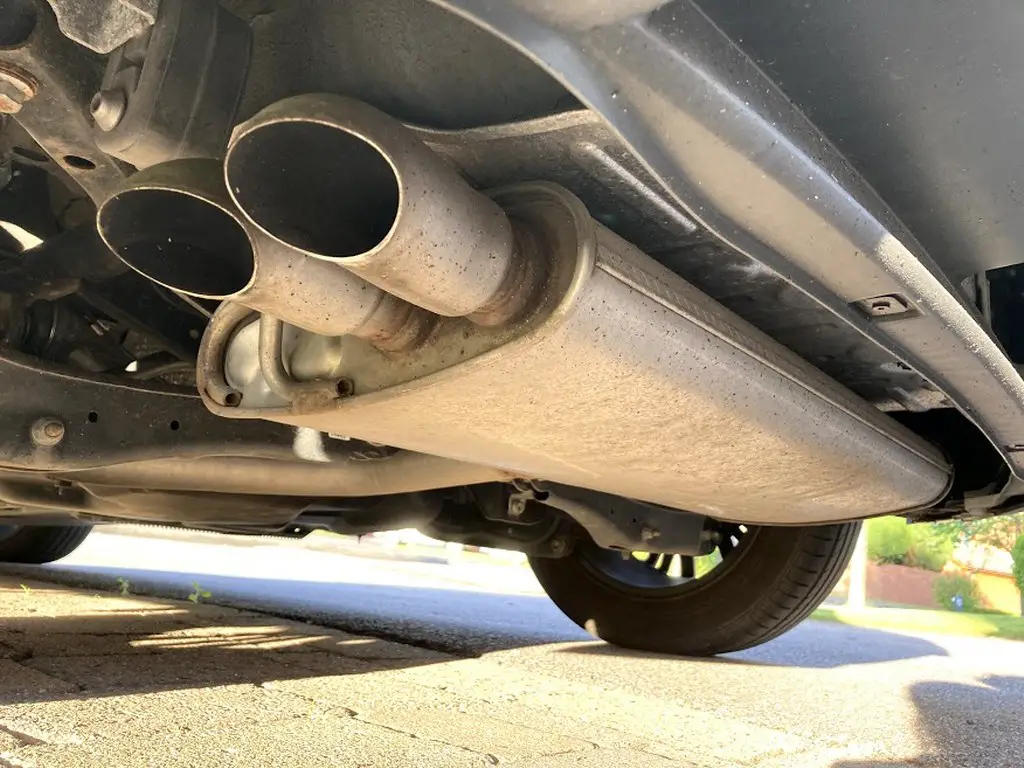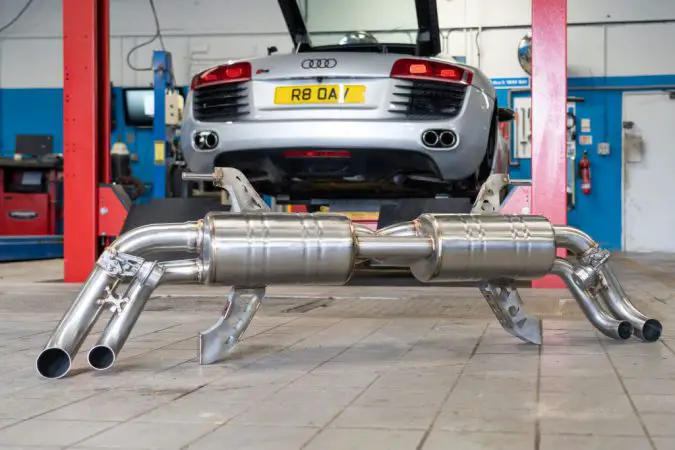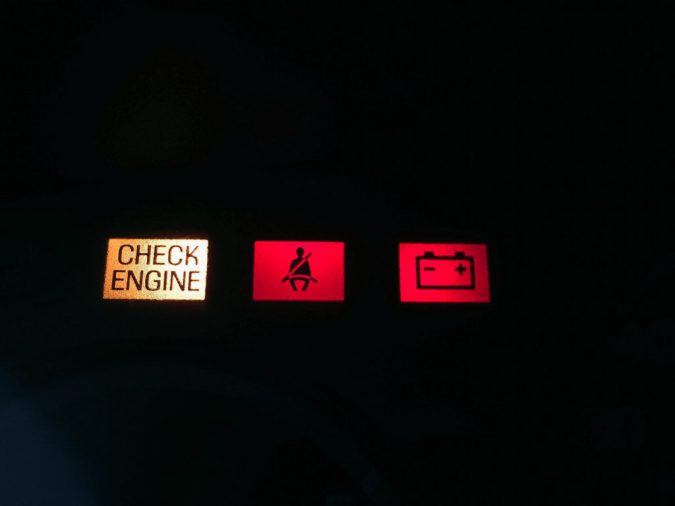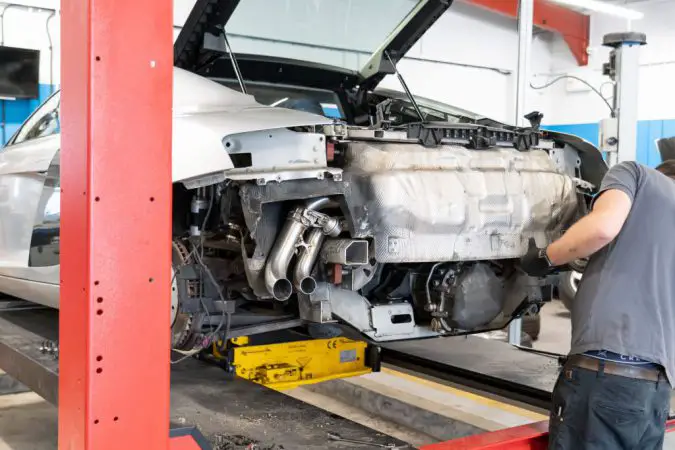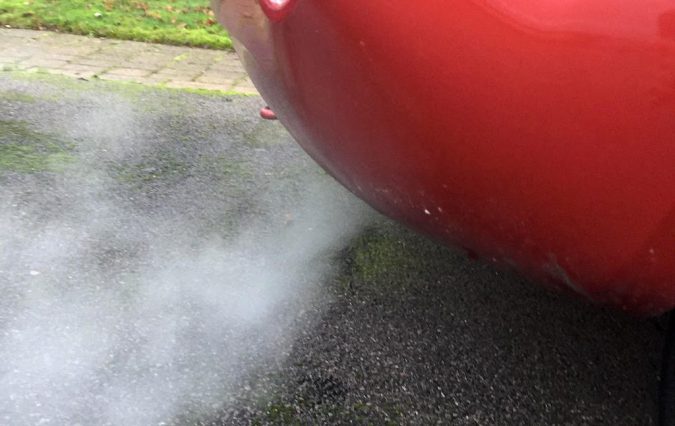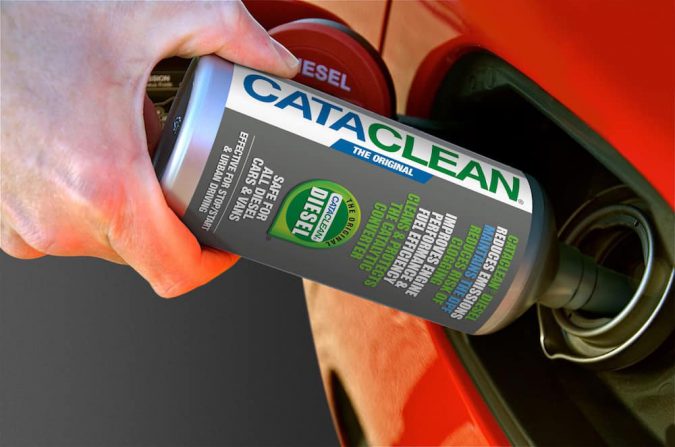So, you are driving your car for many years and as time progress’, you are starting to notice that the car is starting to feel different. Your engine doesn’t run smoothly as before and is down on power? Perhaps, you might need to know how to fix catalytic converter without replacing it. You probably feel like your car doesn’t breathe at all, and is desperately trying to stay alive although everything looks ok.
Let me tell you that you shouldn’t be worried about this issue. Only two things can go bad when you are seeing these symptoms. Your intake or your exhaust system. Or maybe both. These two components need to be clean and properly maintained if you want your car to perform at its finest.
At the start of the intake is the engine air filter. These filters are clogging up after some miles and they need to be changed frequently by your mechanic, or by yourself if you are mechanically inclined.
The other part is the exhaust. Especially the catalytic converters that can get full of junk. This junk is interrupting the exhaust gases and does not let them out smoothly. Especially if it’s an older model or a diesel vehicle. These catalytic converters clog up after certain miles and need a thorough clean.
In this article, we are going to dive deep into how you can sort out this issue and how to fix a catalytic converter without replacing it. We will also learn what are the main culprits that cause the catalytic converter to clog up and how you can address these issues by yourself, or by a professional mechanic. So, follow along.
What Is A Catalytic Converter
The catalytic converter is a piece of equipment that is installed in the exhaust system of an internal combustion engine. It is box-shaped with a honeycomb structure on the inside.
Its main task is to process all of the gases and fumes that were created in the combustion process and make them less toxic. The purpose of the catalytic converter is to make the vehicle produce less smog and other toxins that are damaging to the environment and also to us humans. Mostly because we breathe these gases and they can affect our body in many ways. Namely, they can cause different diseases that can lead to premature death.
A bad catalytic converter may also ultimately lead to catastrophic engine failure. So, it is a smart idea to address this issue on time. Imagine that your car is suffocating and cannot release the gases inside of the exhaust pipes efficiently. Pressure may appear and cause cracking on the exhaust. Overall, it can slow down the engine. It can act as an exhaust brake in a truck, but you clearly do not want that in your car. Because car engines are weak and they cannot stand the same pressure as a diesel truck can.
If the catalytic converter is broken, it doesn’t necessarily mean that it is junk and you need to replace it with a new one. There are many ways how you can revitalize a catalytic converter and bring the performance back to the car. And some of these ways we are going to discuss later in this article. But first, let’s see how these converters actually work and do their magic under the hood.
How Do Catalytic Converters Work
Catalytic converters were invented in the early ’70s when stricter regulations came into law. They were necessary in order to reduce smog and also stop pollution and make the air cleaner and safer for the people.
How they work is fairly simple. Combustion is a process of creating energy. Fuel, air, and a spark are the three important things that cause the explosions in the engine. These explosions make the crank move and produce energy. That will result in your car accelerating from a standstill to a cruising speed on the road.
This combustive reaction has some downsides. Namely, the combustion process results in motive energy, but also in addition to that, water vapor H2O and also carbon dioxide CO2 are produced. The CO2 is causing pollution in the air because it consists of harmful particles that make the air toxic to breathe. Namely NOx particles.
This is where the catalytic converter comes into play. The catalytic converter as we said is a box that has a honeycomb structure on the inside and is made out of precious metals. These metals combined with high heat causing to oxidize the particles and reduce emissions (as with what is the purpose of a catalytic converter). Still, some fumes come out of the car which is toxic. But they are not as bad as before they enter the catalytic converter.
The catalytic converters are made out of precious metals. Namely platinum, this metal is hard to come by. They also include rhodium and palladium. And all this comes at a high cost. These metals make the catalytic converters very costly. They can go up to $2000 for a pair of new cats. Because of this fact, many thefts are happening.
People are stealing them from cars and later resell them on the black market to earn money (for more insight, check out our explainer on whether can I drive with a stolen catalytic converter, as well as the Hyundai Sonata catalytic converter theft, and what do catalytic converter theft laws mean, as well as the signs of a stolen catalytic converter).
Bad Catalytic Converter Symptoms
There are a lot of signs that can mean that your catalytic converter is bad. We shall discuss some of them. We went a step ahead and we found the six symptoms that are most common to come by when you have a broken catalytic converter:
How To Fix Catalytic Converter Without Replacing Symptoms #1: Check Engine Light
This symptom is one of the most common symptoms connected to the issue of a broken catalytic converter. And if you have a broken catalytic converter, this light probably haunts you for some time and you are still delaying your trip to your mechanic for the diagnosis process to start.
This light turns on because of the O2 sensors that are in front of the catalytic converters. These sensors are monitoring the gases that go through the exhaust and give an estimate to the ECU on how efficiently your car is working. So, if your converters are bad the readings will also go bad and cause some error codes to appear. Errors appear because the sensor readings do not match the required parameters that are considered to be optimal for the car computer.
The best thing to do in this situation is to take your car to your local mechanic and diagnose the problem. You need to connect it to a computer to be properly diagnosed. If you have a scanning tool, this will save you some money since you will not have to pay mechanics to do that job for you.
How To Fix Catalytic Converter Without Replacing Symptoms #2: Rotten Egg Smell
If you smell something like a rotten egg while you are revving your engine. It’s a clear sign that your catalytic converter is broken.
The gasoline contains a small amount of sulfur. And during the combustion process, the sulfur is converted to sulfur dioxide which is odorless and doesn’t cause a bad smell.
When your catalytic converter is broken, instead of converting it do sulfur dioxide. The sulfur passes right through, and the smelly hydrogen sulfide exits your exhaust. Causing that rotten egg smell in the process.
How To Fix Catalytic Converter Without Replacing Symptoms #3: Failed Emissions Inspection
If your catalytic converter is clogged or broken you are probably not going to pass emissions in your state.
For example, if you go to an inspection and your catalytic converter is clogged the readings will be bad. It will not resemble the factory norm. The inspector will see this and will fail your inspection. They will tell you to fix your converter and bring your car back.
Another example is if the catalytic converter is broken the readings will go through the roof. Because there isn’t much honeycomb left inside in the catalytic converter box and basically you are running your car on straight pipes.
This will also fail your test and you will be asked to replace your catalytic converter in order to pass the inspection.
How To Fix Catalytic Converter Without Replacing Symptoms #4: Slow Acceleration
Another symptom that you will probably easily notice, especially if you own the car for a long time. When you are trying to pass other vehicles on the road, you will face a loss of power and will really struggle to keep up the momentum of the vehicle.
The reason behind this is the carbon buildup in the catalytic converter. Inside the converter, there is no space left for the gases to pass through. Gases are trapped in the manifolds and they heat up, causing the gases to act as an exhaust brake. This is a very common feature in diesel trucks, but here the gases are working against your engine.
The biggest reason why this is happening to you is that your car was driven in the city rather than on the highway. So, the buildup inside became too significant. If you do not clean your catalytic converter, you probably will damage your engine in the worst-case scenario.
The best thing to do is to take the car to some service that offers catalytic converter cleaning and they will rinse all of the carbon buildups from it. Returning it to factory condition.
How To Fix Catalytic Converter Without Replacing Symptoms #5: Poor Fuel Economy
If you are visiting the gas station more frequently than you should. Then you are probably having some issues. Broken catalytic converters may cause increased fuel consumption and this may hurt you in the long run.
If your exhaust is blocked it may cause your car to burn more fuel than needed. All this is because of the bad readings from the O2 sensors. You don’t have a proper exhaust flow and the engine thinks that it needs to put in more fuel in order to deliver the requirements.
This is bad because you will get some excessive carbon buildup on your engine heads and that may cause the ports to get blocked or stuck. In the long run, this may cost you a lot to fix. Mostly because you need to take the engine apart and clean it. Also, machining work and many more other complications may appear. This is a big headache that you want to avoid.
How To Fix Catalytic Converter Without Replacing Symptoms #6: Rattling Noise
If you hear some rattling noise when you step on the gas from your catalytic converter this means that your catalytic converter is toast. The honeycomb is torn to pieces and when you rev the engine the inside looks like a popcorn machine.
The sound that a broken catalytic converter may produce will probably wake up your neighbors as well.
So, getting a new catalytic converter is probably going to be a lifesaver for you (especially, once you’ve referred to a catalytic converter price lookup tool for a Honda Pilot catalytic converter). If you can’t find a new one, there are plenty of used ones in the junkyards across the country. But watch out not to buy something that is equally broken as yours.
How To Fix Catalytic Converter Without Replacing Symptoms #7: Smoke From The Exhaust
When you have a rattling noise in your catalytic converters there is probably going to be a lot of smoke when you fire up your car in the morning. Your exhaust is not doing its job anymore and needs a replacement.
If your car is smoking badly then you know what to do. Go to your local mechanic and find a replacement exhaust system for your vehicle. With this new system, your car will return to factory specs and run as good as new.
How To Fix A Catalytic Converter
When you are thinking of getting a fix for this issue there are a couple of options lying on the table and yours is which option you are going to take. We will take a look at some of them and thoroughly explain how to fix catalytic converter without replacing:
How To Fix Catalytic Converter Without Replacing Option #1: The Italian Tune Up
You have probably heard of this way of fixing a clogged catalytic converter. It is not something that manufacturers are recommending, but it works. And if your catalytic converter is bad you should definitely try this advice first, because it is the easiest and it will also save a lot of money in the process.
When you are driving a car in city conditions in slow traffic it may cause your catalytic converters to fill up with these bad particles. Mostly because the catalytic converters are not getting into operating temperature. They don’t get warm enough to burn the particles and these particles then stick on causing clogging. But here the Italian tune-up may save you.
The science behind this is running your car on high RPM, at high speed for a couple of minutes on the highway. This will bring your catalytic converters to their running temperature and will burn the debris that is clogged inside them. The sweet spot is between 800 and 1832 degrees Fahrenheit. To do this, run your car up and down the gears a few times and try to get close to the redline at high rpm.
At this heat, some magic will happen and all of the junk that is inside of your converters will burn off and dissolve. But there isn’t a guarantee that it will work, especially if your catalytic converter is too far gone and clogged too much. In that case, only a deep clean will help which we will discuss later.
But remember, stay safe while doing this and watch out for getting a ticket for fast driving. Obey the law and also the speed limits.
How To Fix Catalytic Converter Without Replacing Option #2: Get A Catalytic Converter Cleaning Additive
These additives come cheap and are claiming to help with this issue of clogging up. There are a couple of simple steps that you need to follow to make this work.
First, get a catalytic converter cleaning additive at your local parts store or the nearest gas station. Then pour this additive into your fuel tank. The third step is to take your car for a spin on the highway.
When you are on the highway keep your RPM above 3000 constantly for 15-20 minutes more or less. This will help to gain heat and burn the debris from the catalytic converter.
This method is like the Italian Tune-Up with a little spin. It should work much better and should be extremely effective. Although you never know, for example, if your catalytic converter is too far gone it may need a total removal.
How To Fix Catalytic Converter Without Replacing Option #3: Give It A Good Old Fashion Cleaning
If the first piece of advice with running your engine at high RPM for a few minutes doesn’t work, then it’s probably time to get your hands dirty and do some things that will really improve your catalytic converter health.
I’m going to explain first how you can do this DIY and then I will recommend some services that can do this job for you.
Note that this is a two-man job, so doing this by yourself is going to be extra difficult.
How To Clean Catalytic Converter
The first thing you should do is to get a lift and jack up your car in the air in order to get the room for work. If you don’t have a lift, a vehicle inspection pit will do the job as well. If you don’t have any of these things you will probably have a hard time. So, if you have a friend that has any of these two options it can help you out with that.
After you lift your car in the air, slowly start to remove the bolts that hold the exhaust and then start removing it piece by piece. Exhaust bolts may be hard to remove, so it’s better to have a blow torch to heat them up in order to unbolt them easily.
Then remove the converter and get a pressure washer. Start your pressure washer at the highest setting. You will need a lot of pressure to remove the debris from it. Apply the pressure and move it around.
The contaminants should start falling though on the other side. When you are done with one side then repeat the process on the other side.
Repeat this process a couple of times until the converter looks brand new again. Then do the reverse process and mount the exhaust on the car.
If you do not have all these tools and assistance, it is better to take it somewhere where they have the tooling needed to complete this job for you. You will maybe pay more money to get it done, but the overall result will be much better and your car will be driving good as new again. But remember to run the car more often on the highway in order to keep the catalytic converters always clean and tidy.
Cutting The Catalytic Converter Off
Many people that have trouble with their catalytic converters are asking the same question and I’m going to answer it for you. Yes, you can cut off your catalytic converters, but there is a drawback to it.
And that drawback is that you will fail the emissions inspection. Nobody will let you drive a car like that, especially if it is some later model that came from the factory with a catalytic converter. The results from the inspection will be completely against you and you will fail.
You can regret this, especially if you cut your catalytic converters and you throw them in the garbage. That’s because you will not be able to register your car until you find a pair of new ones and that may be costly. You will pay many times more because of this mistake rather than getting a good aftermarket exhaust.
Also, there are many hazards to the environment if you run the car like that, so don’t be that guy.
Facts about Catalytic Converters:
- The catalytic converter reduces harmful emissions by converting them into safer compounds using rare metals like platinum, palladium, and rhodium.
- Signs of a bad catalytic converter include poor engine acceleration or starting, sulfur or ammonia smell, rattling noise, and failing emissions test, among others.
- The “Italian Tune-Up” is a common fix for a clogged catalytic converter, involving driving the vehicle hard to heat up the converter to its most-efficient temperature, burning off deposits that might have built up in the intake, cylinder head, exhaust, oxygen sensors, and catalytic converter.
- Running a different fuel or fuel additive may be effective at cleaning out catalytic converter deposits. For example, running high-octane fuel or adding one gallon of lacquer thinner to ten gallons of gas.
- Other engine problems, such as a lazy oxygen sensor, fuel trim issues, oil or coolant burning, or engine misfire problems, could lead to catalytic converter contamination or premature failure.
- Exhaust leaks can skew oxygen sensor readings and lead to catalytic converter malfunction, but are relatively inexpensive to fix compared to replacing the converter.
- Cleaning the catalytic converter may be done through pressure washing or soaking it in hot water and degreaser, but drying it completely is necessary before reinstalling.
- To make your catalytic converter last longer, it’s important to keep your car well-maintained, address engine problems promptly, and drive the car regularly and at highway speeds.
- When it comes to fixing catalytic converter problems, replacement may not always be necessary, and the issue can sometimes be addressed by cleaning or repairing other components.
- Catalytic converters are expensive, costing upwards of $1,000, and are a critical part of the vehicle’s emissions system, so addressing problems promptly is important to prevent engine failure and maintain your car’s performance.
How To Fix Catalytic Converter Without Replacing: In Conclusion…
In this article, we went deep into the problematics when it comes to catalytic converters and we discussed some useful tips on how you can diagnose the problem of a broken catalytic converter. There are many symptoms when a catalytic converter is bad and some of them are as we mentioned, bad smell, running poorly, low power, etc.
We also added some useful tips on how you can fix this issue all by yourself without replacing the catalytic converters and spending a ton of money on it.
And lastly, we come to the conclusion, and that is to run your car on the highway frequently. This will help out your catalytic converters to get up to temperature and burn the clogging particles. If you follow this advice, you will never have to worry about your catalytic converter getting clogged ever again.
Frequently Asked Questions
If you’re still curious to learn more about how to fix catalytic converter without replacing it, our FAQs here might help…
How To Unclog A Catalytic Converter
Over time, there’s a greater chance that your catalytic converters will get clogged up. Thankfully, there are ways that you can unclog the catalytic converter instead of needing to replace the entire unit. However, this will only work if the catalytic converters aren’t too severely clogged. One neat option is by using special catalytic converter cleaners. Just pour it into your gas tank, drive at a set RPM and speed (you’ll have to refer to the specific instructions for each product), and wait for the cleaner to start unclogging your catalytic converters. If that’s not enough, you could also disassemble the catalytic converters and wash them manually.
How Much To Replace Catalytic Converter
Catalytic converters are incredibly expensive, and this is mainly due to the inclusion of precious metals inside them. This includes the use of platinum, palladium, as well as rhodium – all 3 of which are very costly in today’s market. These precious metals are necessary to allow for the chemical catalyzation process to occur in breaking down some of the most toxic fumes in your exhaust into less poisonous ones. As such, this explains why catalytic converters are quite pricey. To replace them, you would consider yourself lucky to find a replacement catalytic converter for under $1,000. In certain vehicles, a brand new catalytic converter may even cost as high as $2,000. Although, the average tends to fall somewhere around $1,500.
Can A Car Run Without Catalytic Converter
Technically speaking, yes. The catalytic converter isn’t a crucial component in regards to whether or not a car can run. Rather, its sole responsibility is to scrub through the exhaust fumes and aid in reducing air pollution. Therefore, driving without a catalytic converter won’t cause any damage to your engine, exhaust system, or the rest of your car. If anything, some might argue that by removing the catalytic converters, you’re freeing up more exhaust flow. Thus, possibly helping you in increasing horsepower as well as improving performance. However, driving without a catalytic converter is still a bad idea, as it’s illegal in every single state, and you will be handed a fine if you’re found to be driving around without one.
Can A Catalytic Converter Unclog Itself
This will depend on how badly clogged the catalytic converters are. If there’s any significant clogging at all, then it can’t unclog itself. Therefore, you’ll have to resort to either cleaning this clogged catalytic converter or replacing it outright if it’s in too bad of a shape. Although, the catalytic converter does unclog itself regularly to ensure a smooth and unhindered exhaust flow. For the catalytic converters to unclog themselves, you’ll have to drive for a relatively long time and maintain it at a set RPM range. Specifically, head over to a long and empty stretch of highway, keep the car at highway speeds, maintain the engine speed to between 2,500 to 3,000RPM, and keep on driving for at least 30 minutes. That should be enough to clear smaller clogs in the catalytic converters.
How Long Do Catalytic Converters Last
Typically, catalytic converters should last upwards of 10 years, or after around 100,000 miles of driving. However, this isn’t a constant, as the exact lifespan of your car’s catalytic converters may vary wildly from one vehicle to another. In other words, the service life of your catalytic converters is highly dependent on how well you take care of the engine. For example, a poorly maintained engine that has too much gas, motor oil, or coolant leaks flowing through the catalytic converter (which shouldn’t happen in any significant quantity normally) will wear it out far sooner. Other than that, other engine-related issues such as overheating would also prematurely wear out the catalytic converters.

